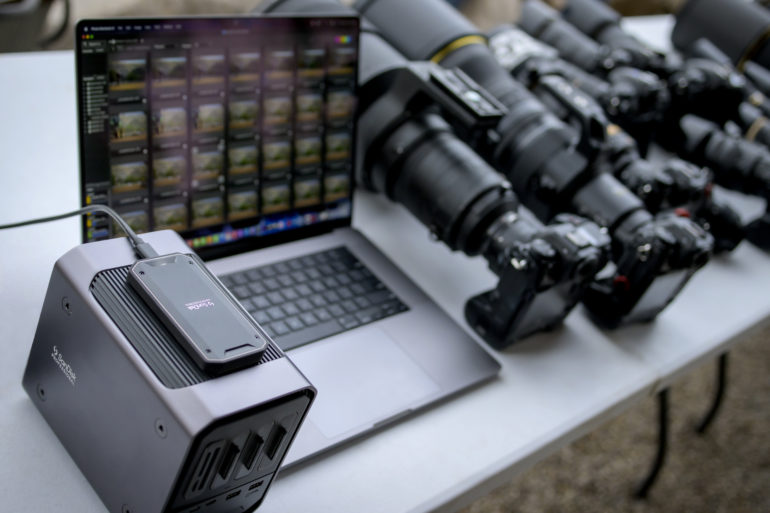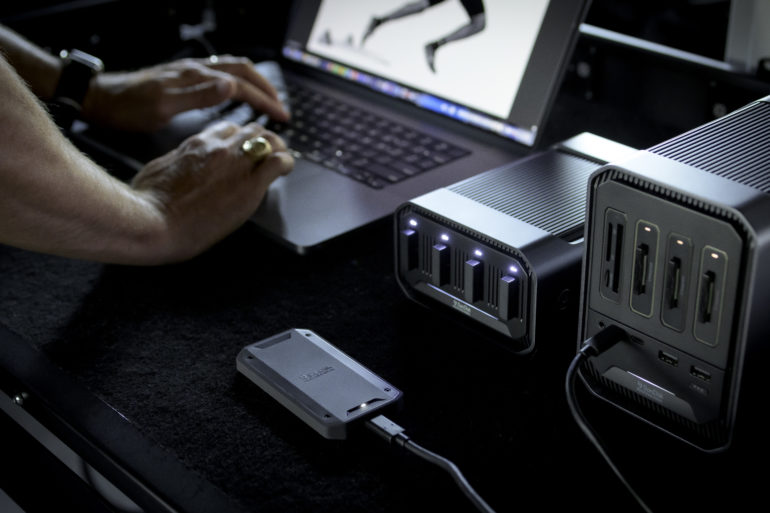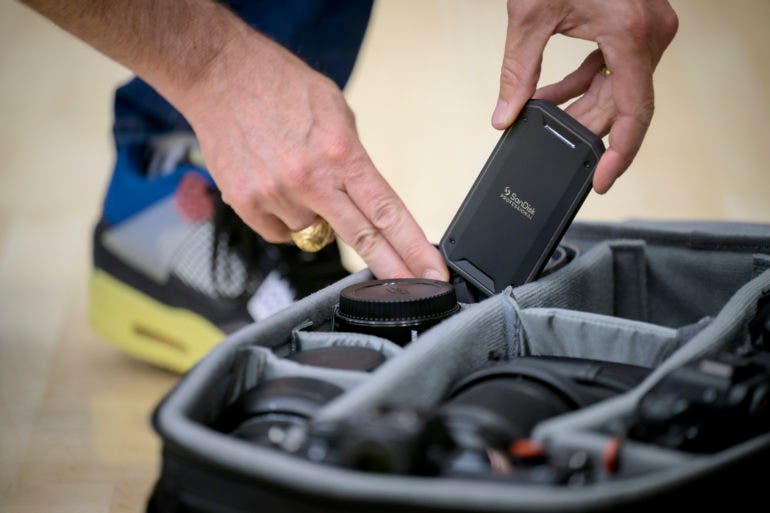According to their claims, the new PRO-G40 SSD is capable of resisting 4,000lb of pressure of crust resistance; which means that if something runs of it, it’s bound to be fine. Of course, we’re happy to test claims like that, and we just might when we get our review unit in! But then there are the more practical tests for photographers, like the speeds. And specifically, here, they’re claiming that it can move 50GB of data in 30 seconds or less. That’s quite a big claim, if you ask us.
These movement speeds are possible using the PRO-G40 SSD’s dual-mode. This is where it uses both Thunderbolt™ 3 (40Gbps) and USB 3.2 Gen 2 (10Gbps) together from what we gather. But 50GB in 30 seconds? Well, that’s quite a tall claim. I’m also sure it will depend on a bunch of other factors like your computer, the cables, and so much more. However, transfer speeds have become pretty insanely fast as of recent.

Further, SanDisk, is making some proud durability claims. They’re stating 4000lb crush resistance, 3 meter drop, and IP68 dust/water resistance. To understand this, the “6” stands for solid resistance and the “8” stands for liquid resistance. This rating claims that it can survive being submerged for a meter. And the dust resistance is the highest claim you can possibly make. Essentially, the new PRO-G40 SSD is saying that it’s topping the scales for durability here.
Here are some more specs on the new SanDisk Professional PRO-G40 SSD:
- 2700 mb/s read speed
- Aluminum core which is said to pull heat away
- 5 year limited warranty
- Operates in 41=95 degrees Farenheit
- The SanDisk Professional PRO-G40 SSD retails for $229.99 (1TB) and $449.99 (2TB).
Granted, 2TB isn’t a lot of space. But if you’re on a shoot and don’t end up snapping a ton of photos, then you’re probably going to be just fine. Further, if you’re not shooting video, then I think you’ll also be just fine.

We haven’t tested this out yet, but we’ve asked for a review unit. And honestly, we think that it will be a great addition for when you’re traveling. I’m curious as to how we’d use it though. With Capture One for iPad, I end up making edits on my iPad and then syncing the photos to the cloud for Capture One. Then, the images just appear on my desktop and I clear out the cloud. I can imagine that photographers would do the same thing for Lightroom. But just in case, I’d probably use this and transfer the photos off to my Drobo later on when I get back to the office.
Lots of photographers, including those out and photographing wildlife for a few days, might really appreciate using these. It’s easy to go off shooting 1,000 photos and have several gigs of photos. With today’s camera speeds, the data management needs can become very absurd. In fact, Reviews Editor Hillary Grigonis talked about exactly this.
However, I’m an exception. A lot of photographer use their Macbook Pros instead. In fact, pretty much everyone else on staff has a working MacBook Pro, but I don’t anymore. Most of my work is done on my big-screen 27-inch iMac from 2019. Lots of photographers use their MacBook Pro and a larger monitor when needed.



Leave a Reply